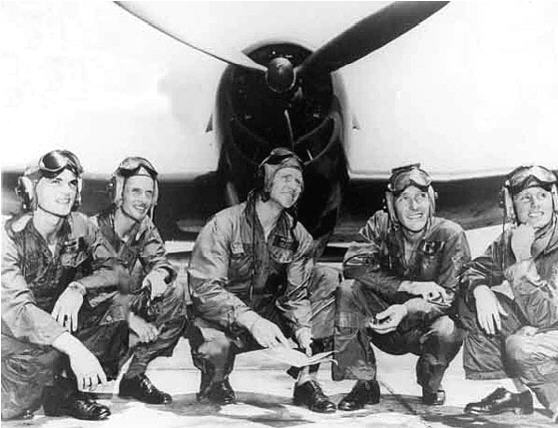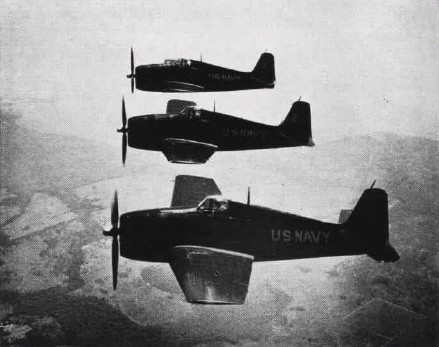On this day in 1946 at NAS Jacksonville, LCDR Butch Voris pushed the throttle forward on his blue and gold Grumman F-6 Hellcat to start his takeoff roll. The other pilots on his team, in their individual Hellcats, also pushed throttles forward. It was the first time the team ever flew together in front of an airshow crowd.
The Blue Angels were born.
On April 24, 1946 the Chief of Naval Operations, Admiral Chester Nimitz ordered the formation of a flight team to enhance Navy moral and bring the mission of naval air into the public eye.
Later, rear admiral Ralph Davison chose Lieutenant Commander Butch Voris as the first leader of the Navy’s new flight demonstration team, The Blue Angels.
Voris personally picked his fellow teammates, LT Maurice “Wick” Wickendoll, LT Mel Cassidy, and LCDR Lloyd Barnard, all combat veterans of the Pacific theater. After establishing themselves, they began secret practice sessions over the Everglades—in the event that if there were a mishap during the initial training, the public would be unaware.

The first team. From left to right: LT Al Taddeo, Solo; LTJG Gale Stouse, Spare; LCDR “Butch” Voris, Flight Leader; LT Maurice “Wick” Wickendoll, Right Wing; LT Mel Cassidy, Left Wing.
After a very short period of practice, the Navy brass witnessed the team’s first performances and they were enthusiastic about Voris’ and his team’s work. This led to the scheduling of the team’s first airshow at NAS Jacksonville on the First Coast of Florida.
Flying highly modified Grumman F6F Hellcats, the former combat pilots performed low-flying maneuvers in tight formations, a tradition carried on through today by the present team flying F/A-18 Hornets. As with today’s Hornets, the Hellcats of yesteryear were painted sea blue with gold leaf trim.
Their first show in 1946 lasted all of 15 minutes. Since then, the show routine has increased in both time and number of airplanes. The type of men, both the flyers and the maintainers, remain constant; they are the best of the Navy.
Back in the early days, Butch Voris instituted the values, intent, and objectives that remain the cornerstone of today’s team. He wanted to keep something going on in front of the crowd all the time. And he wanted to be better than the Army Air Corps, the predecessor to the Air Force and their team, the Thunderbirds.
In short order, Butch Voris’ team won worldwide recognition as the best aerobatic team for flying spectacular maneuvers in tight formation close to the ground. The United States Navy and the Blue Angels are perched high on the hill as the best aerobatic team flying. No other flight demonstration team is capable of playing “King of the Mountain” to take away the Blues’ position as the King of Airshow Performers.
For my previous post about the Blues, see Impressions.
-30-
© 2011 J. Clark


Early Hellcats vs Zeros? Which one better? I know one fault of the Zero – wood frame, but a better performer? I’d take P-38 Lightning over any WW2 fighter.